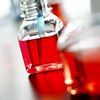Frequent infection of cortical neurons by JC virus in patients with progressive multifocal leukoencephalopathy.
Wüthrich, C; Koralnik, IJ
Journal of neuropathology and experimental neurology
71
54-65
2011
Mostrar resumen
The human polyomavirus JC (JCV) infects glial cells and causes progressive multifocal leukoencephalopathy (PML), a demyelinating disease of the brain, in immunosuppressed individuals. The extent of JCV infection of neurons is unclear. We determined the prevalence and pattern of JCV infection in gray matter (GM) by immunostaining in archival brain samples of 49 PML patients and 109 control subjects. Among PML patients, 96% had demyelinating lesions in white matter and at the gray-white junction (GWJ); 57% had them in the GM. Most JCV-infected cells in GWJ and GM were glia, but JCV also infected neurons in PML lesions at the GWJ of 54% and GM of 50% patients and in GM outside areas of demyelination in 11% of patients. The JCV regulatory T antigen (Ag) was expressed more frequently in cortical neurons than the VP1 capsid protein. None of the control subjects without PML had any cells expressing JCV proteins. Thus, the cerebral cortex often harbors demyelinating lesions of PML, and JCV infection of cortical neurons is frequent in PML patients. The predominance of T Ag over VP1 expression suggests a restrictive infection in neurons. These results indicate that JCV infection of cerebral cortical neurons is a previously under appreciated component of PML pathogenesis. | 22157619
 |
Abnormal expression of myelination genes and alterations in white matter fractional anisotropy following prenatal viral influenza infection at E16 in mice.
S Hossein Fatemi, Timothy D Folsom, Teri J Reutiman, Desiree Abu-Odeh, Susumu Mori, Hao Huang, Kenichi Oishi
Schizophrenia research
112
46-53
2009
Mostrar resumen
Prenatal viral infection has been associated with the development of schizophrenia and autism. Our laboratory has previously shown that viral infection causes deleterious effects on brain structure and function in mouse offspring following late first trimester (E9) and late second trimester (E18) administration of influenza virus. We hypothesized that middle second trimester infection (E16) in mice may lead to a different pattern of brain gene expression and structural defects in the developing offspring. C57BL6 mice were infected on E16 with a sublethal dose of human influenza virus or sham-infected using vehicle solution. Male offspring of the infected mice were collected at P0, P14, P35, and P56, their brains removed and cerebella dissected and flash frozen. Microarray, DTI and MRI scanning, as well as qRT-PCR and SDS-PAGE and western blotting analyses were performed to detect differences in gene expression and brain atrophy. Expression of several genes associated with myelination, including Mbp, Mag, and Plp1 were found to be altered, as were protein levels of Mbp, Mag, and DM20. Brain imaging revealed significant atrophy in cerebellum at P14, reduced fractional anisotropy in white matter of the right internal capsule at P0, and increased fractional anisotropy in white matter in corpus callosum at P14 and right middle cerebellar peduncle at P56. We propose that maternal infection in mouse impacts myelination genes. Artículo Texto completo | 19487109
 |

















